How to Grow Lungwort? - Pulmonaria Officinalis Benefits and Care
Lungwort is a perfect plant for any garden. It's great for organizing shaded spots, where standard plants might not grow. It's a medium-difficulty species, and its various cultivars amaze with their multicolored flowers. Up until recently, it was grown not only because of its appearance, but also the medicinal properties. Learn all about the needs of pulmonaria and grow your own beautiful plant.
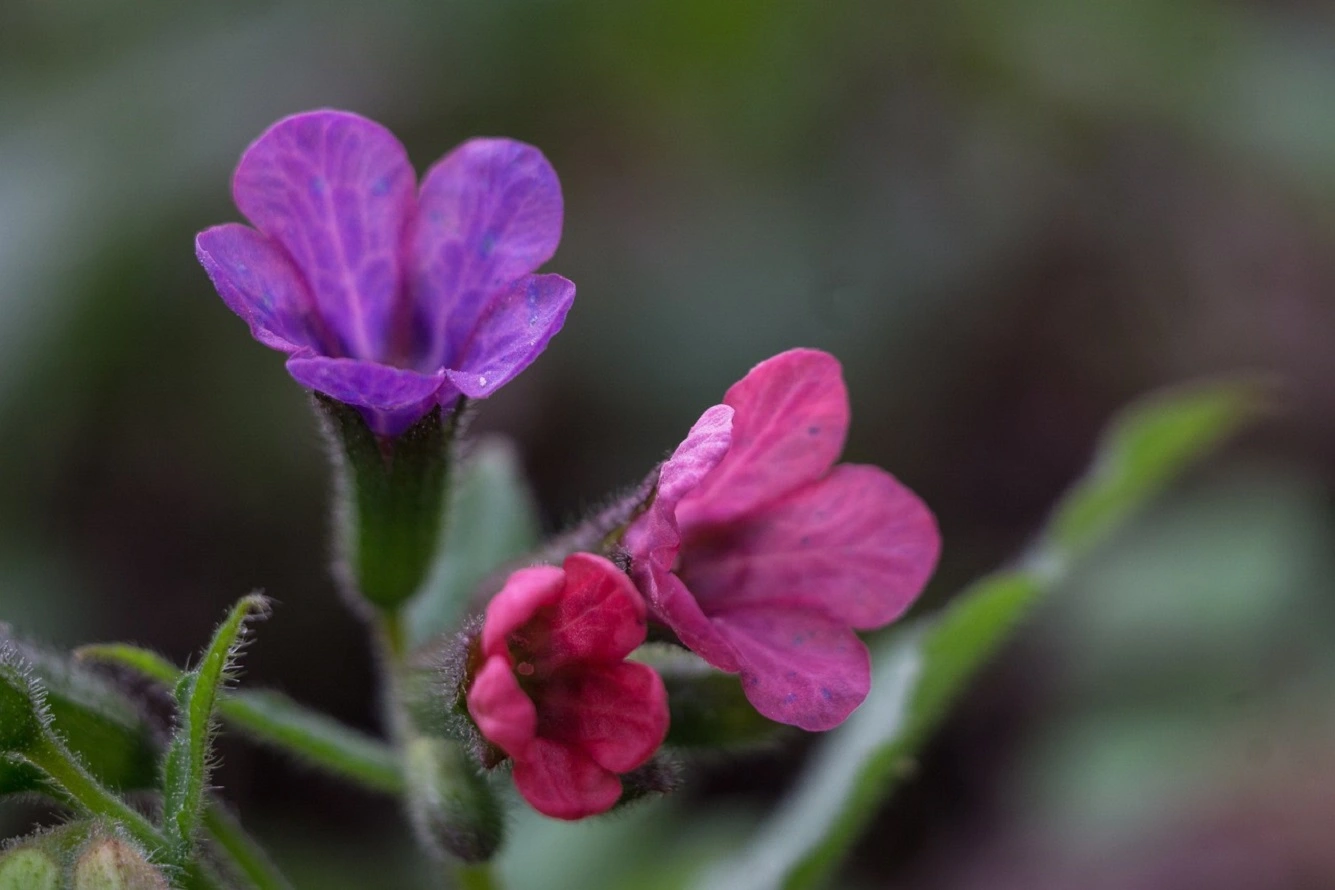
What is the origin of lungwort plant?
Common lungwort, or Pulmonaria officinalis is a plant also known as Mary’s tears. Its natural habitat includes the southern parts of Europe, although it grows in Asia as well. A part of its Latin name, pulmo, refers to lungs. Hence, the name of the plant - it’s because lungwort was traditionally used for treating lung-related issues.
Currently, lungwort is cultivated in gardens mostly because of its ornamental value. Regardless, some people still appreciate it for certain benefits.
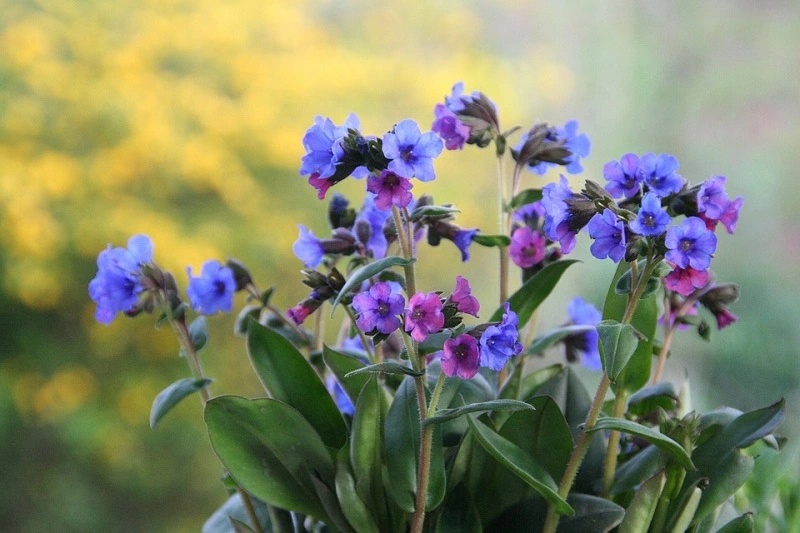
What does lungwort look like?
Lungwort is a plant growing up to 15-30 cm (6-12 in) tall. It forms quite dense and thick clumps. They sometimes develop long stems covered in tiny hair. The leaves are very green and covered in silver spots. Around March, first bell-shaped flowers appear on the stems. Initially, they are red, but later they usually turn purple.
Lungwort – the most popular varieties
Lungwort us a very popular plant. It’s commonly grown in yards. Three of its cultivars are particularly noteworthy:
- Sissinghurst White,
- Blue Mist,
- Opal.
Sissinghurst White is a variety with single-colored white flowers, which harmonize perfectly with the green, silver-spotted leaves. It grows into dense clumps, which can be used for property line landscaping, or as a general garden decoration. It blooms from April to May.
Blue Mist is a variety developing flowers in two colors. Just like the previously mentioned cultivar, it has highly saturated green leaves with silver spots. It grows from 30 to 40 cm (12-16 in) tall. It’s one of the most impressive types of pulmonaria plant.
Opal forms very thick clumps. They are relatively low, as they grow up to 15 cm (6 in) tall. The flowers have a uniform white color.
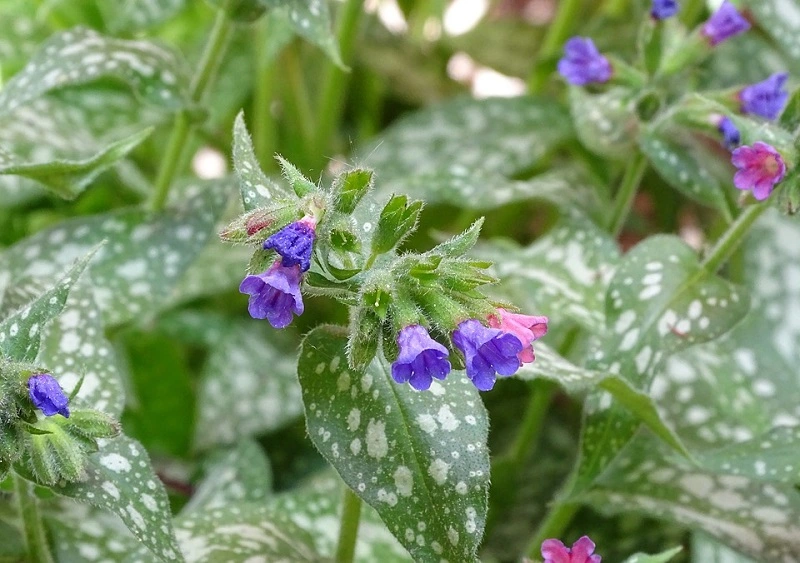
What’s the best location for lungwort – sun or shade?
If you decide to plant a lungwort in your garden, make sure to pick a good location for it. The plant doesn’t like being exposed to strong sun. It prefers half and full shade – it’s a shade-loving species. If the spot has too much sunlight, the color of the flowers might be less intense.
The soil should be rich in humus and lightweight. Common lungwort grows best in soils of a slightly acidic or neutral pH level. A mixture of clay soil and sand is a perfect option.
The plant is resistant to frost, which is a big advantage. Thanks to this, it can survive winter in the ground, without the need of additional protection.
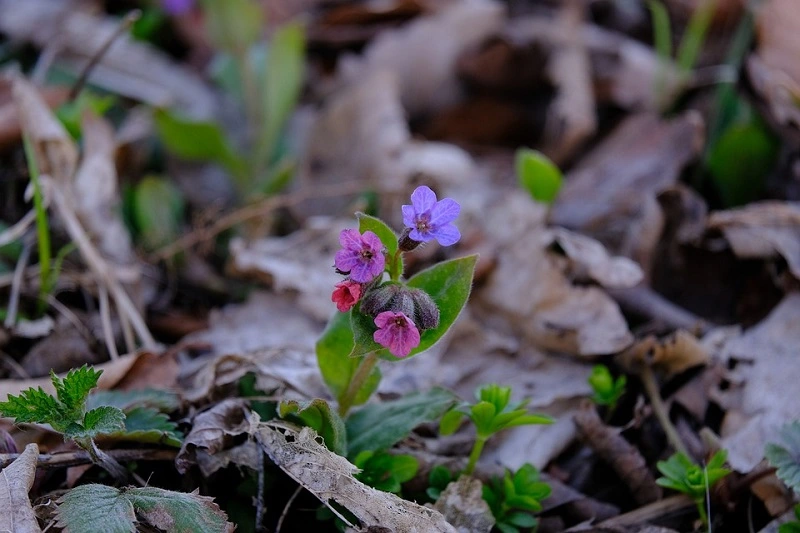
When to plant lungwort?
In accordance to the rules of horticulture, lungwort seeds have to be planted in spring. When preparing the ground for sowing, make sure to remove any weeds. We also recommend mixing the soil with compost to enrich it and quicken the plant’s growth.
The seeds have to be planted keeping a spacing of 30 cm (12 in). Mulching with tree bark is also recommended. You can use leaves instead.
How to care for lungwort?
Lungwort requires regular watering. The soil in which the plant grows has to be constantly moist. But make sure water is not standing in the ground. It’s dangerous to underground parts of the plant, which might begin to rot as a result.
The matter is particularly important when the plant is developing buds and begins blooming. The watering should be limited during this period.
Fertilizing is as crucial as watering. The plant requires intense nourishment – but only once per season. A multi-ingredient product designed for blooming plants is the best option.
In late autumn, the plant has to be cut. All stems should be shortened to about 10 cm (4 in) above ground. This way, the plant can safely survive winter without worrying it will get attacked by pests or diseases.
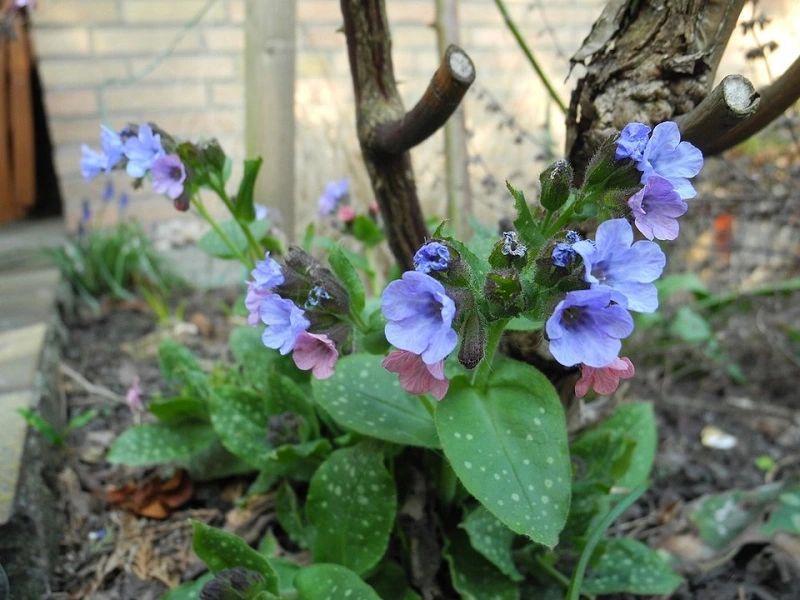
Lungwort – benefits of the plant
Are you wondering about the benefits of pulmonaria officinalis? The plant has certain medicinal properties. It positively affects mucous membranes of the respiratory tract. The allantoin and soluble silicates have anti-inflammatory properties. Saponin and mucilage are expectorants. The plant is also rich in tannins, which inhibit microbial diseases.
Pulmonaria officinalis – contraindications
Common lungwort is valued for its medicinal benefits, but one should avoid it in some cases. A brew made from the plant soothes the digestive system and helps with food poisoning. But when drunk in excess, it might cause harm and lead to constipation. Patients suffering from stomach issues and excretory problems shouldn’t use this plant without a prior medical consultation.
Common lungwort is also an expectorant. But note that any lung diseases require extra caution. Treating any serious conditions with herbs usually isn’t the best solution.
Where to purchase lungwort plants?
Common lungwort is a popular and easily available plant. Its seeds can be purchased in any larger garden shop. You might also get them in a supermarket with a garden section. A packet of lungwort seeds is typically fairly cheap. It’s a perfect solution for anyone who loves beautiful flowers, but doesn’t want to spend too much money on them.
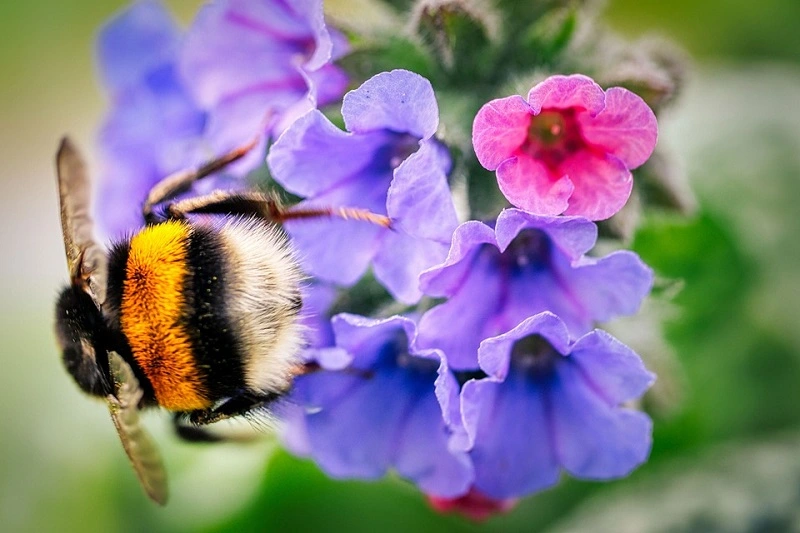
📍 What does common lungwort look like?
Common lungwort can bloom in two colors at the same time. The plant has characteristic green leaves with silvery spots. Thanks to them, the plant stands out from other species in the garden.
📍 Where does lungwort grow?
Lungwort is a perennial which grows basically everywhere in the middle and southern parts of Europe. Because of its colors and properties, it's becoming an increasingly popular garden plant in the world.
📍 Where to buy a lungwort plant?
Lungwort is available in most garden stores – thanks to its popularity. You can also look for this species online. After buying lungwort seeds, you can plant them and enjoy the beauty of the plant in a short time.
Featured articles




